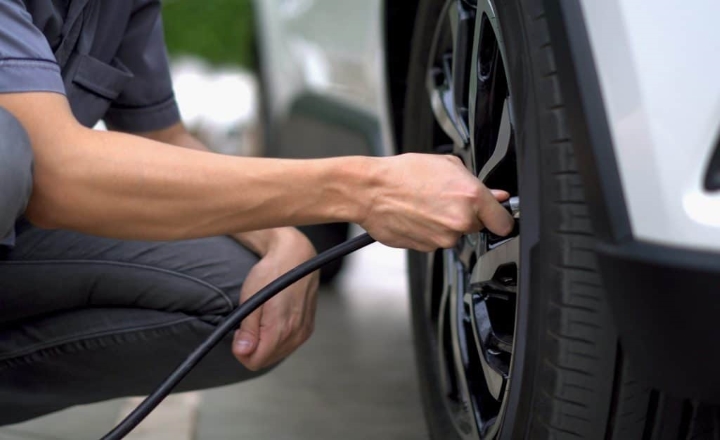Are you looking for a straightforward and easy-to-follow guide on How to Let the Air Out of a Tire? If so, then you’ve come to the right place. This article will provide a detailed overview of steps to help you reduce the pressure in your tire. Whether it is from a regular puncture or an emergency, such as when your tire has been overinflated, this article serves as a comprehensive guide that can get you through any tire deflation process.
How to Let the Air Out of a Tire
Knowing how to let the air out of a tire is essential for any driver, especially when you need to change your tires or adjust the pressure in them. Whether you’re a seasoned driver or just starting, letting the air out of your tire can be a daunting task if you don’t know how. Fortunately, it’s straightforward to do it.
Locate the valve on your tires
Locating the valve on your tires is an essential skill that every driver should know. The valve of a tire plays a vital role in maintaining proper air pressure, which ensures optimal vehicle performance and safety. If you need to let the air out of your tire for any reason, finding the valve is your first step.
Start by visually inspecting each tire to locate the small metal or plastic caps that cover the valves. These caps are usually found on the outer edge of each wheel and are designed to protect the valve from dirt and debris. Once you’ve located these caps, unscrew them using your fingers or a small tool like pliers or a screwdriver.
Once you’ve removed the cap, take a moment to inspect the valve itself. You’ll notice that it has a tiny pin inside it that protrudes slightly outward when pressed.
Replace the cap on the valve
When it comes to maintaining your vehicle’s tires, proper care and attention can go a long way in ensuring safety and longevity. One important step in this process is replacing the cap on the tire valve. This cap serves as a protective cover for the metal part of the valve, which can become damaged or corroded if left exposed to the elements.
To replace the cap on your tire valve, first, locate where it was previously placed. The cap may have fallen off or been removed during previous maintenance procedures. Once you’ve located the metal part of the valve, simply align the new cap with its threads and screw it into place using your fingers. Avoid using tools to tighten or loosen caps as they can easily become stripped or damaged.
It’s important to note that while caps may seem like small and insignificant components, they play an important role in preventing air leaks from occurring within tires.

www.auttomotive.com
Check the pressure on the tires
Checking the pressure on the tires of your vehicle is an essential task that should be done regularly. It helps ensure that your tires are inflated to their recommended level and can function optimally. The process of checking the air pressure in your car’s tires is simple, and all you need is a tire pressure gauge.
Locate the valve stem on each tire, which can be found near the hubcap or directly on the rim. Then remove any dust caps from the valve stem before attaching your tire pressure gauge. Place it onto the valve and firmly press down for an accurate reading. If you hear any hissing sounds, this indicates that air is escaping from your tire; hence it may require some additional pumping.
Once you have obtained a reading from one tire, repeat this process for all other tires as they may have different pressures depending on factors such as load capacity and temperature changes.
Press the tip of the screwdriver on the metal pin
When it comes to repairing or maintaining equipment, having the right tools at hand can make all the difference. In some cases, specialized tools may be necessary to properly diagnose and fix a problem. However, there are also times when a simple tool like nose pliers or a needle can do the trick.
For example, if you need to release air from a valve, you can use a pair of nose pliers or any other thin and small tool. Simply locate the valve and press the tip of your chosen tool onto the metal pin in the centre of the valve. As you apply pressure, air will begin to discharge from the valve until it is fully released.
Using this technique can save time and money on repairs that might otherwise require more complex solutions. Of course, it’s important to exercise caution when working with valves or any other machinery that could be dangerous if mishandled.
Jack the car up
When it comes to fixing a car or replacing a tire, one of the most crucial steps is jacking up the car properly. There is a point on the side of the tire specifically for this purpose, and using the lever to jack up the car will lift it into the air. This way, you can remove and replace tires easily without damaging your vehicle.
The first step in jacking up your car is locating this designated point on your tire’s side. It may be marked with an arrow or symbol indicating where to place the jack. Once you have found this spot, carefully position your jack and begin pumping it up using either a manual or electric lever. Make sure that your jack is secure before proceeding any further.
When lifting your car with a jack, always remember to never exceed its recommended weight limit. Overloading your jack can lead to severe injuries or even death if not handled correctly.

www.auttomotive.com
Lose the metal pin
Losing the metal pin from a valve can be an annoying and frustrating experience. However, fear not as there is a quick and easy solution to this problem. All you need is a sharp tool, such as a pair of thin needles 5 inches in length, and some nose pliers. With these tools at hand, you can quickly remove the metal pin from your valve in no time.
Take your pair of thin needles and insert them into the small hole located on top of the valve. Once inserted, gently push down on the needles while simultaneously turning them in a counterclockwise direction. This will loosen the metal pin from its socket and allow you to grab hold of it with your nose pliers. Then use your nose pliers to grip the metal pin firmly but gently so it does not slip out of your grasp.
Fit the end of your tire pump
Maintaining the proper tire pressure is crucial for ensuring a safe and smooth ride. After finding the accurate pressure recommended by your vehicle manufacturer, you need to fit the end of your tire pump on the valve to fill your tires with air. The valve can be found on the interior side of your tire.
To begin, remove any valve caps that may be covering the valve stem. Then, press the end of your tube tire onto the end of the valve stem until it is secure. Be sure to hold it firmly in place throughout this process so that no air escapes.
Turn on your pump and start filling up your tires with air until you reach the recommended pressure level. Keep an eye on both your pump’s gauge and a separate pressure gauge to ensure that you don’t overinflate or underinflate your tires.
Remove the tire pump
Removing the tire pump is a crucial step when it comes to deflating tires and releasing excess air. For starters, you need to locate the valve stem cap on the tire and unscrew it with your fingers. This will expose the valve core inside the stem. Use a small screwdriver or valve tool to press down on the core and release any trapped air in the tire.
Once all of the excess air has been released, it’s time to remove the pump from its position. This is done by twisting it counterclockwise until it comes loose from the stem. Be careful not to damage either component during this process as they are both essential for proper tire function.
Now that you have removed the pump, you can flip up the switch located on its backside in an upward direction. This will prevent any additional air from entering your now-deflated tire.
Push the tire down to remove air
If you’ve ever found yourself in a situation where you need to quickly remove air from a tire, then pushing it down onto the ground is the most efficient method. This simple yet effective technique can save you time and effort, especially if you’re dealing with multiple tires that need deflating.
To start, locate the valve stem on the tire and remove the cap. Then, position the tire so that it’s perpendicular to the ground with the valve stem facing downward. Next, use your body weight to push down on the tire with both hands placed firmly on top of it. As you push down, listen for air escaping from the valve stem.
Continue pushing down until all of the desired air has been released from the tire. It’s important not to over-deflate your tires as this can lead to uneven wear and tear or even a blowout while driving.
Conclusion
Letting the air out of a tire can be an intimidating task for some, but it is important to know what to do to stay safe. By following these steps correctly and having the necessary tools on hand, anyone can safely and effectively let the air out of their tires as needed. It is important to remember that safety should always come first when working with tires and that caution should always be taken when dealing with them.
Frequently Asked Questions
How to let the air get out of a tire?
Start by locating the valve stem on your tire and unscrewing the cap. Then, insert the metal pin into the valve stem and press down until you hear a hissing sound. This will indicate that air is being released from the tire. Once you have let out as much air as necessary, remove the pin and replace the cap with the valve stem.
How do tires seal?
The sealant is applied to the inside walls of the tire. This sealant helps to create a waterproof barrier around the rim of the tire, preventing air from escaping or water from entering. The sealant also helps to reduce friction between the tire and the road surface, making for a smoother ride.
Where does the air go into the tire?
Air enters the tire through the valve stem. The valve stem is a small, metal tube located at the base of the tire. It is connected to an inner tube which holds air and helps inflate the tire. When you use an air pump to fill up your tires, the air goes through the pump and into the valve stem, filling up the inner tube and inflating your tire.
How do tires stay inflated?
Tires stay inflated due to air pressure. Air is pumped into the tire through a valve stem and is held in place by the tire’s inner tube. This creates a pressure differential between the inside and outside of the tire, which keeps the tire inflated. The pressure can be adjusted with an air pump to maintain optimal performance.

